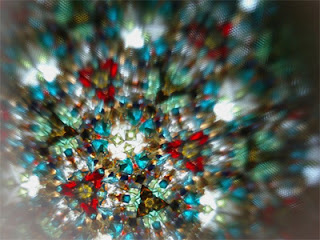
By
Kevin Roberts. The countdown to the September Rugby World Cup is well underway. But still, there’s lots of issues out there in the world of rugby, and many commentators believe New Zealand has the best two teams in the competition - the
All Blacks A side and their B team! The Northern Hemisphere are of course waiting for them to choke, as we have done four times before. This time I believe they will be disappointed.
While it is true South Africa, Australia and Ireland will become competitive and push the All Blacks to the max, I think this time the AB’s will be ready for them. And the reason they’ll be ready is Graham Henry, an All Blacks coach who has taken a different view on player development. Rugby has only been professional for a decade, and it was only three or four years ago that we saw players coming through the system who had done nothing except play rugby. And it was a pretty boring way to spend your life – gym in the morning, gym in the afternoon, naps all day and that’s pretty much it. The result was mental stimulation and personal growth at a minimum and underdeveloped personalities ill equipped to cope with public expectations and pressure. Men expected to become leaders because they wear the black jersey, but incapable of boiling an egg for themselves.
In August 2004, Graham began a process of change that has proved the most significant in the history of the All Blacks. Prior to becoming a professional coach in 1996, Graham was a very successful school teacher in New Zealand, and one of the most admired principals in the nation. He opened up his All Blacks campaign with a belief that “better people make better All Blacks". His focus was on good balanced lifestyles that included interests away from rugby and learning every day. Simultaneously, the management team made a concerted effort to stamp out the drinking culture that’s been endemic to the All Blacks for many years.
Empowerment is all the rage in my world, and is now all the rage with the All Blacks. The players have been set up into specific leadership groups that they run themselves. It is these groups that provide feedback to management. We lost the Rugby World Cup in the Semi-Final at Twickenham because a) France played sublimely, b) the ball bounced for them, and c) our leaders were the coaches on the benches, not the players on the field.
Now we have an eleven-man leadership group in the All Blacks with each player/leader taking responsibility for a bunch of six other All Blacks on and off the field. To do this job they are empowered to construct their own parameters, their own culture, their own ethics and their own punishment systems.
In my business we believe in unleashing and inspiring our people, not in command and control. Now the All Blacks are thriving under the same system. If there is an unsung hero of the squad, it is Gilbert Enoka. Gilbert is a sports psychologist who has helped identify with the players what it means today to be an All Black, with all the history and all that expectation. The new Haka was first performed twelve months into this program and reflected what this new team of All Blacks felt the Haka and the All Black jersey meant to them.
Graham and his management have maximized the potential of this All Blacks team on the rugby field and have given us our best chance of success. They also help make the NZRU job much easier because this new approach is obviously of much greater appeal to sponsors.
Gregor Paul, on the
NZ Herald’s website, wrote a great summary of Graham’s initiatives, which I think are both groundbreakers for rugby, and offer a great stimulus for business everywhere.Empowering the players – what they do:
- Set the alcohol limit for any given night.
- Help determine protocols for dealing with media, sponsors, fans.
- Assess management’s performance and provide feedback about training sessions and game plans.
- Recommend punishments for those who break protocol.
Building better people:
- Richie McCaw has gained his pilot’s license.
- Anton Oliver is heading a lobby group opposing the construction of a wind farm in Central Otago.
- Nick Evans is a qualified physiotherapist.
- Conrad Smith has completed a law degree and worked for a legal firm last year while he recuperated from a broken leg.
- Dan Carter has opened fashion retail outlets.
- Byron Kelleher launched a plastic pallet business.
Sport learning from Business; Business learning from Sport. A virtuous circle.
Kevin Roberts is co-founder of nzedge.com. Photograph: Carisbrook (Sweeney)
















